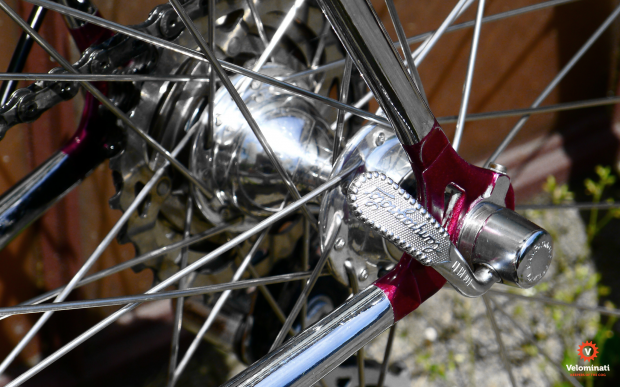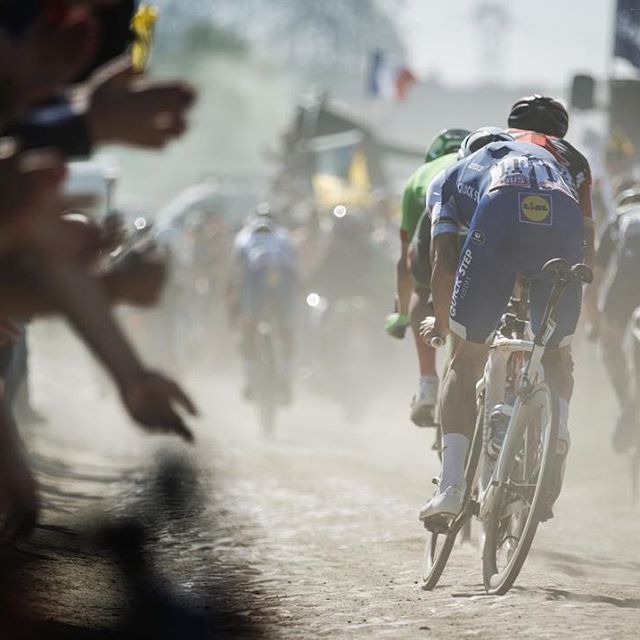In Memoriam: Loose Ball Bearings

The darker months bring out the macabre in each of us; for Gianni it was the extinction of his beloved Park Tool adjustable clamp. For me, I found myself mourning the fact that I recently purchased a headset press. Ignoring the fact that a Velominatus of my stature didn’t already own one, the mourn behind the mourn is where the interest lies.
What could possibly compel anyone to grieve over buying one of the most remarkable tools a person could own? I once installed a headset using only a wooden staircase, a two-by-four, and a hammer. My dad was surprised I managed to get the cups installed properly; my mother was surprised at the state of the steps. Using a press to install a headset is a beautiful process but it also doesn’t surprise anyone the way installing a headset with a hammer and a block of wood does.
In my life as a Cyclist, I have rarely required my own headset press; my dad owned a press when I was growing up and by the time I lived far enough from my dad’s workshop to merrit buying my own tool, headsets had evolved to the modern sealed cartridge bearing which only requires opposable thumbs to install. The headset press was running down the same trail upon which the whippoorwill was last seen right until some bright spark decided that screw-in bottom-bracket cups were too expensive to manufacture and that it would be a good idea to seat them directly into the frame. At which point the headset press made a surprising re-entry into the Velominatus’ toolbox on the same terms that my former headset installation technique impressed my mother.
I mourn this for two reasons. First, BB30 (and its relatives) are based on a sound principle where one increases the support to the fulcrum to keep it from flexing under load while simultaneously increasing the diameter of the crank’s axle to reduce flex there as well. The result is pretty obvious to anyone who has ridden a bike using this system; it’s like riding without a chain the first time you use one. The point missed is that the BB shell is made generically to a loose standard instead of specifically to a manufacturer’s requirements, and the tolerances aren’t nearly tight enough to keep the system from creaking without the application of Loctite or the like, which is an abomination in itself. A bicycle should not require Loctite, ever.
Second – and more concerningly – it brings into mind the point that we have strayed far from The Path.
There was a time when the adjustment of a bearing against its races was an art mastered by the great artisans of our sport. Bearings are designed to reduce the friction between two surfaces that need to rotate around one another and consist of a system of two races (a cup and a cone) and a set of metal or ceramic balls which sit between the races. Each of the races are attached to the rotating surfaces, and the chief business of the balls is to facilitate expedient movement between the two, mostly because balls are good at rolling, and not much else besides chasing if you ask my dog. How effective the bearing is (how much it reduces the friction) is a function of how smooth the surfaces of the races are, how round the balls are, and how little tension exists between the three.
Art is about expressing perfection in a world of flaws; within this definition, adjusting a set of bearings is perhaps the most perfect example of art. No surface is perfectly smooth and no ball is perfectly round, which means that all bearings are flawed. To combat this, we add lubrication which helps smooth out the imperfections but also increases resistance. The master artisan balances these flaws to achieve the state closest to perfection.
The first time I rebuilt a hub, I spent hours adjusting the system; first teh bearings would be so loose that the axle would rattle. Then I’d tighten it to where the bearings felt rough. Back and forth the pendulum swung until the bearings spun smoothly. My pride brimmed over at my own success. The Master takes that as a starting point and works from there until they find perfection. This is the sort of skill that, in the past century, not only demanded the highest pay among mechanics, but secured their reputation and fixed their place in the industry.
Today, we adjust bearings with an allen key. We press them in with a headset press if our opposable thumbs can’t do the trick, and then we use a hex key to tighten the sucker just enough that we can stand how it functions. Its no way to live, although I admit it is a practical way to live.
But we aren’t professionals; we are disciples. I don’t care about practical, I care about the experience. My Campa Record hubs still have loose bearings, but that’s the only bicycle I own which still holds this relic. And I don’t even own the tools to properly adjust them. So for 2015, I set for myself the following goal: I endeavor to rebuild at least one of my bikes with a full compliment of adjustable, loose ball-bearings – the headset, the wheels, the bottom bracket. That is my mission, that is my rite. I shall embrace the cartridge bearing as part of the modern bicycle, but I will journey down the path to maintain my skill in adjusting a true bearing.
Vive la Vie Velominatus.

